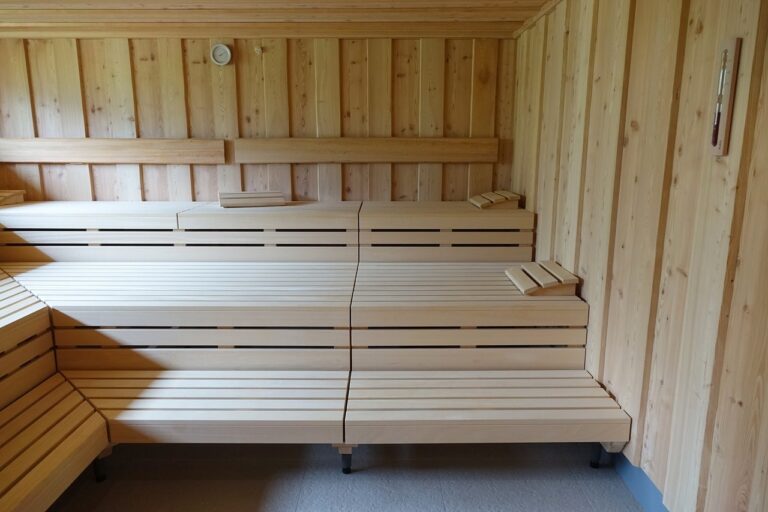Sauna Temperature: How Hot Do Saunas Get?
There’s something undeniably rejuvenating about the sensation of warmth enveloping your body, as beads of sweat form and cascade down your skin. This experience is at the heart of the age-old tradition of sauna bathing, which has been embraced by cultures around the world for centuries. From the soothing embrace of steam saunas to the cutting-edge technology of infrared saunas, the benefits of sauna therapy are as diverse as the ways to experience it.
In the following article, I’ll cover how hot the most common saunas get and the benefits at different temperatures.
If you don’t want to read the article, saunas can go as low as 120°F (49°C) up to 200°F (93°C).
Traditional Saunas
Traditional saunas are the epitome of the sauna experience that most of us are familiar with. These saunas use either electric or wood-burning stoves to heat the air within the cabin. The temperatures in traditional saunas typically range from 160°F to 200°F (71°C to 93°C), creating an environment that induces a hearty sweat within minutes. This intense heat not only relaxes the muscles but also prompts the body to release endorphins, providing a natural mood boost.
Benefits at Various Temperatures
- 150°F (65°C): This lower temperature is ideal for beginners or those who are sensitive to extreme heat. It offers a gentler introduction to the sauna experience and encourages relaxation.
- 175°F (79°C): At this temperature, the body starts to sweat more actively, which helps eliminate toxins and cleanse the skin. It can also lead to increased circulation and improved cardiovascular health.
- 200°F (93°C): The highest end of the traditional sauna temperature spectrum offers a more intense experience. It can promote a deep sense of relaxation and enhance the body’s natural detoxification process.
Infrared Saunas
Infrared saunas are a relatively recent addition to the sauna world, gaining popularity for their ability to directly heat the body without excessively warming the air around you. These saunas use infrared heaters to emit radiant heat, which penetrates the skin more deeply than traditional saunas. As a result, users often experience the same benefits at lower temperatures, typically ranging from 120°F to 150°F (49°C to 66°C).
Benefits at Various Temperatures
- 120°F (49°C): At this temperature, infrared saunas provide a gentle and soothing experience. This can be beneficial for those who find the high heat of traditional saunas uncomfortable.
- 135°F (57°C): Infrared saunas at this temperature can help alleviate muscle pain and promote relaxation. The deep-penetrating heat encourages blood flow and can aid in reducing inflammation.
- 140°F (66°C): Infrared saunas may not go much higher than this, but even at this temperature, users can experience increased cardiovascular benefits, improved skin health, and enhanced detoxification.
Steam Saunas
Steam saunas, also known as steam rooms, are a departure from the dry heat of traditional and infrared saunas. These saunas maintain a temperature of around 110°F to 120°F (43°C to 49°C) but have humidity levels of up to 100%, creating a cloud of moist heat that envelops the body. This experience is not only relaxing but also beneficial for the respiratory system and skin.
Benefits at Various Temperatures
- 110°F (43°C): The lower temperature of steam saunas makes them accessible to a wider range of people. The combination of warmth and humidity can help open up the airways and soothe the respiratory system.
- 120°F (49°C): Steam saunas at this temperature continue to promote respiratory benefits while providing a gentle and calming environment for relaxation.
Choosing the Right Sauna Temperature for You
The ideal sauna temperature ultimately depends on your personal preferences and your body’s response to heat. It’s important to listen to your body and gradually increase the time you spend in a sauna to avoid overheating. Staying hydrated is crucial, as sweating can lead to fluid loss.
Whether you’re drawn to the classic ambiance of a traditional sauna, the cutting-edge technology of infrared heat, or the comforting embrace of a steam room, each type of sauna offers its own unique benefits. From relaxation and detoxification to improved cardiovascular health and enhanced well-being, the heat of saunas has the power to invigorate both the body and mind. So, the next time you step into a sauna, embrace the warmth and let it work its magic on you.
Conclusion
As we conclude our exploration into the world of saunas, it’s evident that these heated sanctuaries offer more than just a relaxing escape. Whether you prefer the traditional allure of wood-burning stoves, the cutting-edge technology of infrared heating, or the serene ambiance of steam rooms, each sauna type presents a unique path to wellness.
From the ancient rituals of purification to the modern understanding of bodily benefits, saunas have proven their ability to heal, rejuvenate, and elevate the human experience. The carefully calibrated temperatures range from the gentle warmth of 120°F to the more intense embrace of 200°F, each come with their own set of advantages. These benefits encompass enhanced circulation, deep relaxation, skin detoxification, and even improved mood due to the release of endorphins.







